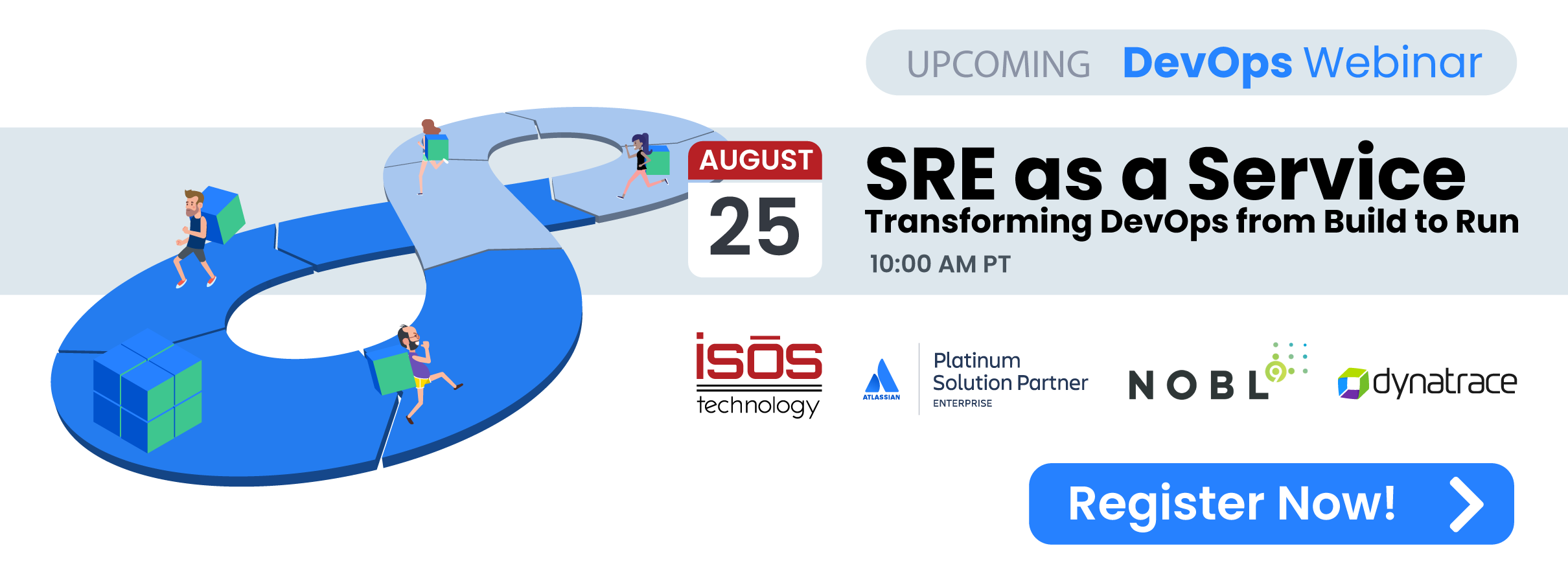
Enterprise Agile transformation unquestionably requires a cultural evolution—or in some cases revolution— and that necessitates a sea change in both mindset and behaviors across the organization. The two are inextricable: mindset begets behaviors, and behaviors beget mindset. Once you get some momentum around both, they start to snowball, and your transformation takes off. As Principle Agilist at Isos Technology, I’ve seen a fair number of organizations stumble when taking that mindset and putting it into practice, and it’s my belief that they have to be purposeful about learning the skills and adopting the practices and processes to enable their teams to take theoretical agile beliefs—the mindset—and put them into action.
Following are three key areas where a purposeful approach that incorporates learning new skills, adopting new behaviors, and implementing new tools, can help organizations breathe life into any agile transformation.
Factor #1: The Ability to Put DevOps in Action
As organizations progress in their agile transformation journey, they inevitably turn to DevOps practices to achieve the speed to market and quality that agile, and its focus on customer value, requires. And although DevOps is cultural at its core, it simply cannot be put into practice without the right toolset. I’ve seen more than a few organizations hit a roadblock because they’ve focused primarily on introducing the agile mindset to their teams but haven’t prioritized the application landscape improvements necessary to put DevOps into action. Without the right tools, development and operations teams have no visibility into shared work, no way to collaborate, and no way to test and release regularly, so they continue to work in silos using their existing, complex, and slow processes. Beliefs and tools need to be introduced on parallel paths.
In prioritizing the application landscape, organizations should be aware of common barriers: overly restrictive governance that prevents necessary tool adoption; lack of governance that means tools are adopted willy-nilly and don’t work together; and inability to relinquish centralized decision-making power so teams who use the tools do not have a voice in their selection are three common ones. In terms of budget, the tools don’t always necessitate big platform upgrades and need not be expensive. I’ve seen open source tools and even homegrown solutions make a big difference.
Factor #2: Configuring Tools to Support an Agile Mindset
DevOps isn’t the only area that requires tooling—tools across the organization need to be configured to support agile behaviors. In order to do this, organizations first must think about rightsizing their toolset, which means having enough tools to get the job done, but not so many that people are confused about which ones they should be using or spending a ton of time logging in and out of them. The tools should also be easy to use, so it’s important to consider things like user interface, and also interoperability. The tools need to talk to each other, which resolves that logging in and out issue, streamlines access to information from other systems, and minimizes the need for complex integrations that have to be built and maintained.
Another area many organizations struggle with in their agile transformations, and where tools can be configured to support the agile mindset, is around mapping work to strategy and seeing how all the value streams or work streams roll up into both a given product and the organization at large. For Atlassian users, this might be Jira Align, but there are certainly other ways to get after this. When straightforward, easy-to-use tooling is in place, not only can managers and teams at every level see how their work contributes to the company’s overall strategy, but reporting and metrics are much more efficient—and that leads nicely into my next point...
Factor #3: Establishing the Right Agile Success Metrics
An agile culture embraces continuous improvement, but the only way to be certain that your organization is improving is to determine what success looks like and measure progress toward those goals. There are an infinite number of metrics to measure, though, and it’s easy to get bogged down in measuring too many things or the wrong things—things that are not true indicators of success. At Isos Technology, our mantra is “measure what matters,” and that boils down to these three things: workforce happiness, agile adoption, and customer value delivered.
Agile requires cultural change, and if your organization’s employees are not happy, it’s a good indicator that the necessary change is not taking place. Organizations should establish regular employee survey practices to take the pulse of their teams and identify both issues and success. While agile transformation usually starts in development or IT, for it to be truly successful, it needs to be adopted across the organization, so it’s important to measure whether teams are embracing it or fighting it—or where there’s simply ambivalence. If you understand where adoption is stalled, then you can delve into the "why" behind it and start resolving those issues. Customer value is one of the primary goals of many agile transformations, and also one of the most cited benefits. Organizations should absolutely be measuring success in the marketplace, and the key to that is tracking product performance—not just project performance.
Adopting Both an Agile Mindset and an Agile Skillset
An agile culture embraces learning from the top down, and many organizations seek out agile coaching to help leaders and teams at every level develop both an agile mindset and the skillset to go along with it. Many agile coaches are what I call "agile purists"—in other words, they are primarily focused on mindset. And as critical as that is, the processes and practices that bring the mindset to life don’t just fall into place. At Isos Technology, we believe companies must be purposeful about adopting and implementing processes, tools, and tracking techniques that reflect the mindset. Without them, it’s nearly impossible for the people who make up a company to embody the behaviors that bring agile to life, no matter how committed to the mindset they are.
How Isos Technology Can Help
As a premier Atlassian Platinum and Enterprise Solution Partner with an Agile at Scale specialization, we’re experts in change management for people and processes, as well as tool adoption to support agile practices. Our comprehensive agile consulting services help organizations increase customer and employee satisfaction, improve operations, and enhance their ability to deliver. We offer support for agile transformations, agile coaching, agile training and certification, agile software implementations, maturity assessments and agile staffing.
To learn more about Isos Technology’s agile services, including Enterprise Agile Coaching, visit isostech.com/services/agile-services.
Sign up to receive more great content
Learn more about Atlassian and how Isos can help by signing up to receive our latest blogs, eBooks, whitepapers and more.

.png)












